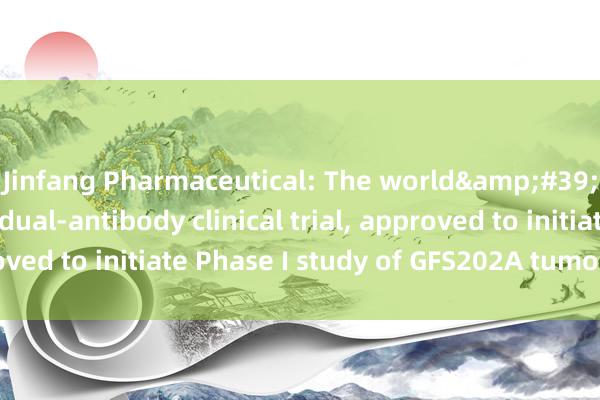
Jinfang Pharmaceutical recently announced that the company's independently developed GDF15/IL-6 dual-anti-GFS202A clinical trial application was approved by the State Food and Drug Administration, agreeing to the company to conduct an open-label, multi-center phase one clinical study on patients with pre-cache and cachexia.
According to reports, cachexia is high in tumor patients and seriously affects the patient's survival rate and tolerance to tumor treatment. Basic research and many clinical studies around the world have confirmed that GDF15 and IL-6 are important factors in the occurrence and development of cachexia. At present, no therapies targeting GDF15 and IL-6 simultaneously have been launched worldwide. GFS202A is the world's first dual-anti-anti-targeting product targeting GDF15 and IL-6, and is also the first GDF15-targeted drug developed by domestic companies and entered the clinical stage.
Sullivan data predicts that the number of cachexia patients worldwide will reach 25.5 million by 2032. Overseas Market.US shows that China will be the fastest growing area in the next ten years for the cachexia treatment market. Cachemic indications are widespread, commonly found in tumors, AIDS, heart failure, chronic obstructive pulmonary disease, chronic nephritis and other diseases. Patients may develop metabolic disorders, weight loss, muscle atrophy and other wasting symptoms. Tumors are one of the most common causes of cachexia. The incidence rate of cachexia in multiple tumor species exceeds 50% and the mortality rate can reach 30%.
Industry insiders said that the abnormal increase in GDF15 and IL-6 levels in cachexia patients are related to the worsening of tumor patients' condition and survival rate; the Phase II trial of GDF15 monoclonal antibody developed by the multinational pharmaceutical company Pfizer has reached the main endpoint, confirming that inhibiting GDF-15 can improve cachexia symptoms; and animal experiments and clinical case reports have both suggested that systematic inhibition of IL-6/IL-6R can improve weight loss and alleviate systemic inflammatory response. Therefore, GFS202A is expected to improve its efficacy through a dual-target synergy mechanism, and at the same time alleviate inflammatory response and reduce the side effects related to anti-cancer treatment.
Jinfang Pharmaceutical's trial will be conducted in several research centers including Sun Yat-sen University's Cancer Prevention and Treatment Center. The first phase of the study will evaluate the safety/tolerance of GFS202A in patients, determine the maximum tolerated dose and the dose range recommended for future studies, and evaluate the pharmacokinetic characteristics of GFS202A and the improvement of weight and appetite to patients. Preclinical studies have preliminarily shown that GFS202A has high affinity and high specificity binding to GDF15 and IL-6 proteins, which can target the inhibitory signaling pathway, increase the dose-dependent weight, fat and muscle tissue in experimental animals, and effectively reduce the C-reactive protein level in experimental animals and alleviate the inflammatory response.
Professor Zhang Li from the Tumor Prevention and Treatment Center of Sun Yat-sen University said: "I am very happy that GFS202A developed by Jinfang has been approved to enter clinical trials. Tumor cachexia is high in many tumor types. Currently, most patients mainly use nutritional support, hormone therapy and other means, and there is a huge unmet clinical need. At present, GDF15 monoclonal antibody therapy has entered the clinical trials around the world. We look forward to more innovative therapies to bring treatment options to patients, and we also look forward to this GDF15/IL-6 dual anti-antibody that can show good safety and efficacy in clinical trials."
Jinfang Pharmaceutical has been established for more than seven years. Its project concept focuses on "global new" product development, that is, selecting global cutting-edge innovative targets and project development progress has entered the first echelon at home and abroad, and using global IP to layout the global market in advance and resist the risks of intra-conversion. The company's past data shows that its current R&D pipeline is deeply rooted in a multi-type RAS targeted therapy matrix, including two selective inhibitors, KRAS G12C and G12D, as well as small-molecular and ADC-type pan-RAS inhibitors; in addition, there are many inhibitors with different targets in its pipeline, and multiple products have entered phase II and above clinical trials.
It is worth mentioning that the flozerreser combination therapy (combined with cetuximab) and GFS202A (dual anti-anti-anti-anti-anti-anti-anti-all-target mechanisms are used, which is expected to achieve better synergistic mechanisms and anti-tumor efficacy in the development of anti-tumor therapy.
